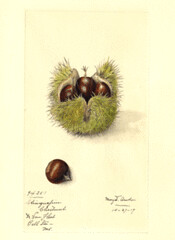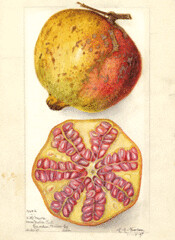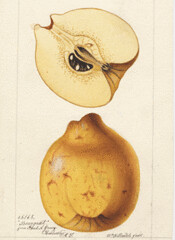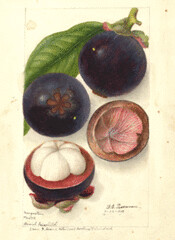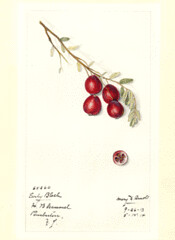I know the title is a pretty bad pun, and not even that accurate. Sorry. Anyway, here's the bit about scab resistance I hacked out of the draft on the WineCrisp apple:
The
Vf gene comes out of a selection
Malus floribunda. The original introgression of the
Vf gene (or genes, but more on that later) was done by Purdue back in the 1940's, and has been used heavily in breeding, including as a fairly early target of marker assisted selection (a
detailed history of scab resistance breeding is available from Purdue. I'll hit the highlights here.)
There are at least seven distinct loci governing resistance to apple scab, each named according to the original source (the "V" is for
Venturia inaequalis, the name of the pathogen):
Vf -
Malus floribundaVm -
Malus micromalusVa - 'Antonovka'
Vb -
Malus baccata Hansen's #2
Vbj -
Malus baccata ssp. jackiiVr -
Malus pumila R12740-7A
Vr2 -
Malus pumila GMAL 2743
There are distinct races of the scab pathogen, though, and they react differently to the different resistances. Race 5 overcomes
Vm, for example, while Race 2 overcomes the resistance in some
M. baccata. In 40 years of breeding, no resistance breaking isolate of
Vf was identified, but towards the end of the twentieth century reports began to surface in Europe of strains which could overcome
Vf.
As I hinted before, it's probably more appropriate to refer to the
Vf locus, rather than the
Vf gene, because the Mendelian
Vf gene is in reality a collection of genes. (Although I use it as much as anyone else (probably more), the word "gene" is actually kind of a problematic one anyway--it's really better to use "locus", to refer to a specific point in the genome, or "allele" to refer to a specific sequence at that locus.) Sequencing showed the so-called
Vf gene to be a
cluster of four genes,
Vfa1,
Vfa2,
Vfa3, and
Vfa4. Clusters of resistance genes aren't uncommon and have been shown in lots of species--it may be the extra copies strengthen the resistance by increasing expression, or allow a broader resistance by having multiple versions. It's also possible that resistance alleles are more likely to evolve from duplicated genes, because the plant can better survive mutations in a gene it already has backup copies of. In this case,
Vfa3 has sustain some pretty serious mutation, and no longer produces a full length transcript. Although the similarity among the remaining four led researchers to suggest that all activate the same defensive systems,
Vfa1 and
Vfa2 (along with the partial transcript of
Vfa3) are primarily expressed in immature leaves, while
Vfa4 is expressed in mature leaves. Of these,
Transgenic apples transformed with each of these apples showed that susceptible varieties expressing
Vfa1 and
Vfa2 became resistant, suggesting these two genes are capable of conveying resistance.
The
Vf locus was really one of the first fruit genes to really be thoroughly investigated and described, from its introgression from a wild species, description as a Mendelian trait, and detailed dissection on the molecular level. Although other source of scab resistance are gaining in importance, and
molecular tools such as
linked markers developed to
improve their usefulness to breeding programs, the
Vf locus remains possibly the most studied disease resistance locus in any fruit crop. (I'm just speaking off the top of my head...Anybody think of any other contenders?)
Labels: apples, disease, Fruit Genetics Friday, genetics, germplasm, malus



